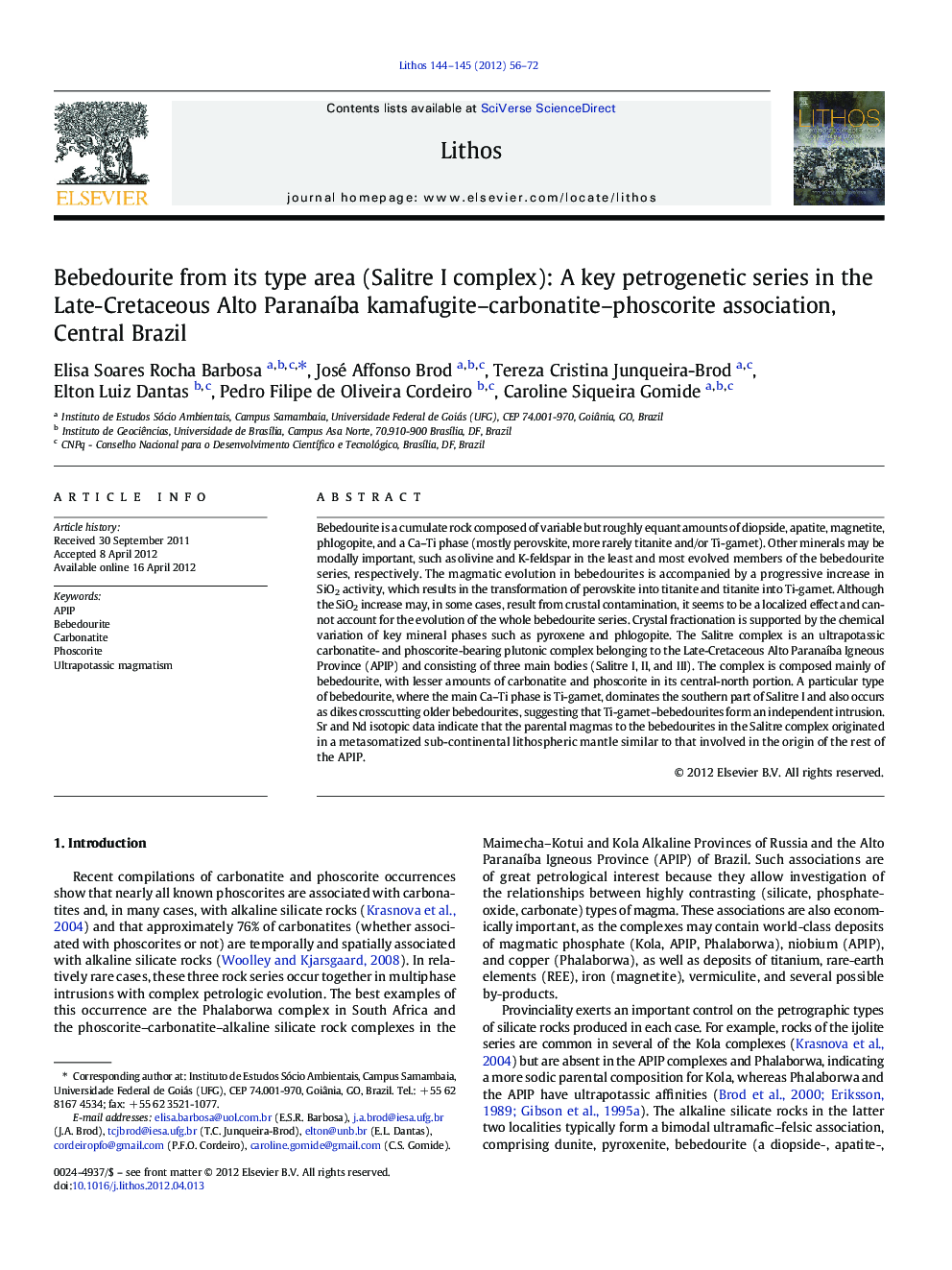| Article ID | Journal | Published Year | Pages | File Type |
|---|---|---|---|---|
| 4716561 | Lithos | 2012 | 17 Pages |
Bebedourite is a cumulate rock composed of variable but roughly equant amounts of diopside, apatite, magnetite, phlogopite, and a Ca–Ti phase (mostly perovskite, more rarely titanite and/or Ti-garnet). Other minerals may be modally important, such as olivine and K-feldspar in the least and most evolved members of the bebedourite series, respectively. The magmatic evolution in bebedourites is accompanied by a progressive increase in SiO2 activity, which results in the transformation of perovskite into titanite and titanite into Ti-garnet. Although the SiO2 increase may, in some cases, result from crustal contamination, it seems to be a localized effect and cannot account for the evolution of the whole bebedourite series. Crystal fractionation is supported by the chemical variation of key mineral phases such as pyroxene and phlogopite. The Salitre complex is an ultrapotassic carbonatite- and phoscorite-bearing plutonic complex belonging to the Late-Cretaceous Alto Paranaíba Igneous Province (APIP) and consisting of three main bodies (Salitre I, II, and III). The complex is composed mainly of bebedourite, with lesser amounts of carbonatite and phoscorite in its central-north portion. A particular type of bebedourite, where the main Ca–Ti phase is Ti-garnet, dominates the southern part of Salitre I and also occurs as dikes crosscutting older bebedourites, suggesting that Ti-garnet–bebedourites form an independent intrusion. Sr and Nd isotopic data indicate that the parental magmas to the bebedourites in the Salitre complex originated in a metasomatized sub-continental lithospheric mantle similar to that involved in the origin of the rest of the APIP.
► Bebedourite is a cumulate rock. ► Hallmark of carbonatite- and phoscorite-bearing complexes of ultrapotassic affiliation ► The Salitre I complex appears to be composed of at least two bebedouritic intrusions. ► (B1) is dominated by a sequence of cumulates. ► B2 bebedourites result from an independent intrusion of more siliceous magma.
